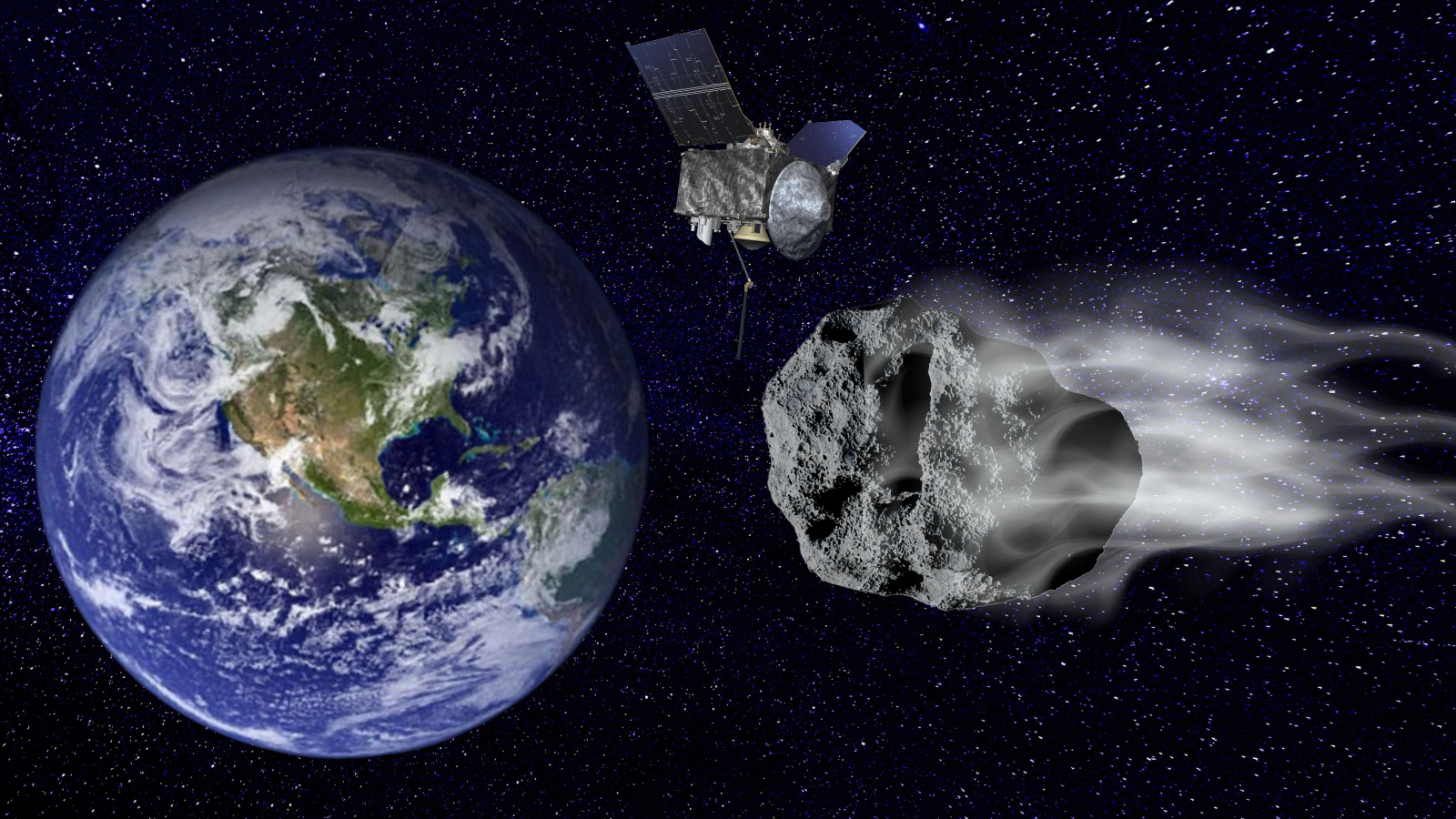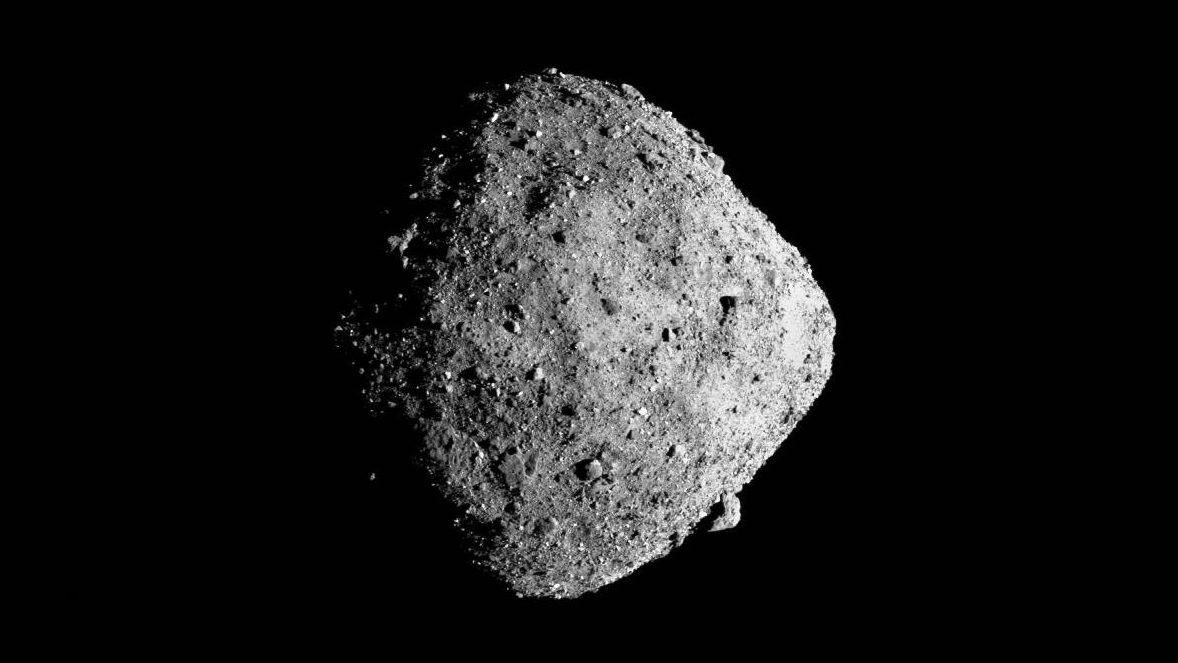NASA can't wait for its OSIRIS-APEX spacecraft to meet 'God of Chaos' asteroid Apophis in 2029
Apophis will make an asteroid flyby like no other in recorded history in 5 years as it becomes visible with the naked eye, and OSIRIS-APEX will be on hand to supervise.

NASA's asteroid sampling spacecraft OSRIS-APEX will have an exciting new mission in 2029, when it will watch an exciting asteroid encounter like no other in recorded human history.
The craft, formerly known as OSIRIS-REx, will bear witness as the asteroid Apophis— named after the ancient Egyptian god of chaos— comes so close to our planet that it could be visible with the naked eye in some parts of the world.
After bringing a sample back from asteroid Bennu, the craft was recently rebranded the Origins, Spectral Interpretation, Resource Identification, and Security – Apophis Explorer (OSRIS-APEX) in recognition of this "bonus mission."
The close approach of Apophis, which is thought to be 1,115 feet (340 meters) across almost as wide as the Empire State Building is tall, on April 13, 2029, will see the space rock come as close to Earth as 20,000 miles (32,000 kilometres), closer than some satellites.
"OSIRIS-APEX will study Apophis immediately after such a pass, allowing us to see how its surface changes by interacting with Earth’s gravity," OSIRIS-APEX project scientist Amy Simon said in a statement.
Related: Asteroid Apophis will visit Earth in 2029. Why do scientists want NASA to send a probe there first?
Apophis became notorious in 2004 as an asteroid that could potentially impact Earth with a size great enough to pose a threat to our planet. However, in March 2021, observations of the orbit of the space rock, also known as Asteroid 99942, led astronomers to conclude that it poses no threat to Earth for at least 100 years.
NASA scientists still want to know how the brush with Earth in 2029 will affect the 324-day orbit of Apophis around the sun. Additionally, coming close to Earth, which Apophis only does around once every 7,500 Earth years, may shake up the surface of the asteroid by triggering quakes and landslides.
Breaking space news, the latest updates on rocket launches, skywatching events and more!
Though this sounds catastrophic, it could reveal what lies beneath the surface of Apophis, and OSIRIS-APEX will be on hand after the encounter to investigate any secrets that are revealed.
"The close approach is a great natural experiment," OSIRIS-APEX principal investigator and University of Arizona scientist Dani Mendoza DellaGiustina said. "We know that tidal forces and the accumulation of rubble pile material are foundational processes that could play a role in planet formation. They could inform how we got from debris in the early solar system to full-blown planets."
Because asteroids are composed of material left over from the formation of planets around the infant sun around 4.5 billion years ago, this investigation could reveal what the building blocks of Earth and its fellow rocky planets were.
Apophis is made of silicate materials and nickel-iron, making it considerably different from the carbon-rich asteroid Bennu, which OSRIS-APEX visited under its prior moniker in Oct. 2020 to collect a sample that it dropped off at Earth in September 2023 before continuing on its mission.
OSIRIS-APEX will reach Apophis shortly after the asteroid makes its closest approach of Earth on April 13, 2029, and will operate around the asteroid for approximately six months. During this time, the spacecraft will perform some of the same investigations that it did during its time at Bennu — analyzing the surface and chemical makeup of Apophis.
And just as it did at Bennu, OSIRIS-APEX will cap this investigation off by dropping to within around 16 feet (5 meters) of the surface of Apophis and blasting it with its thrusters, further displacing surface material to get closer to the heart of the Empire State Building sized space rock.
"We learned a lot at Bennu, but now we’re armed with even more questions for our next target," Simon concluded.
Update 1/3: NASA has clarified that, though Apophis makes its closest approach of Earth on April 13, 2029, OSIRIS-APEX will only arrive at its target shortly thereafter. This article has been updated to reflect this.

Robert Lea is a science journalist in the U.K. whose articles have been published in Physics World, New Scientist, Astronomy Magazine, All About Space, Newsweek and ZME Science. He also writes about science communication for Elsevier and the European Journal of Physics. Rob holds a bachelor of science degree in physics and astronomy from the U.K.’s Open University. Follow him on Twitter @sciencef1rst.

